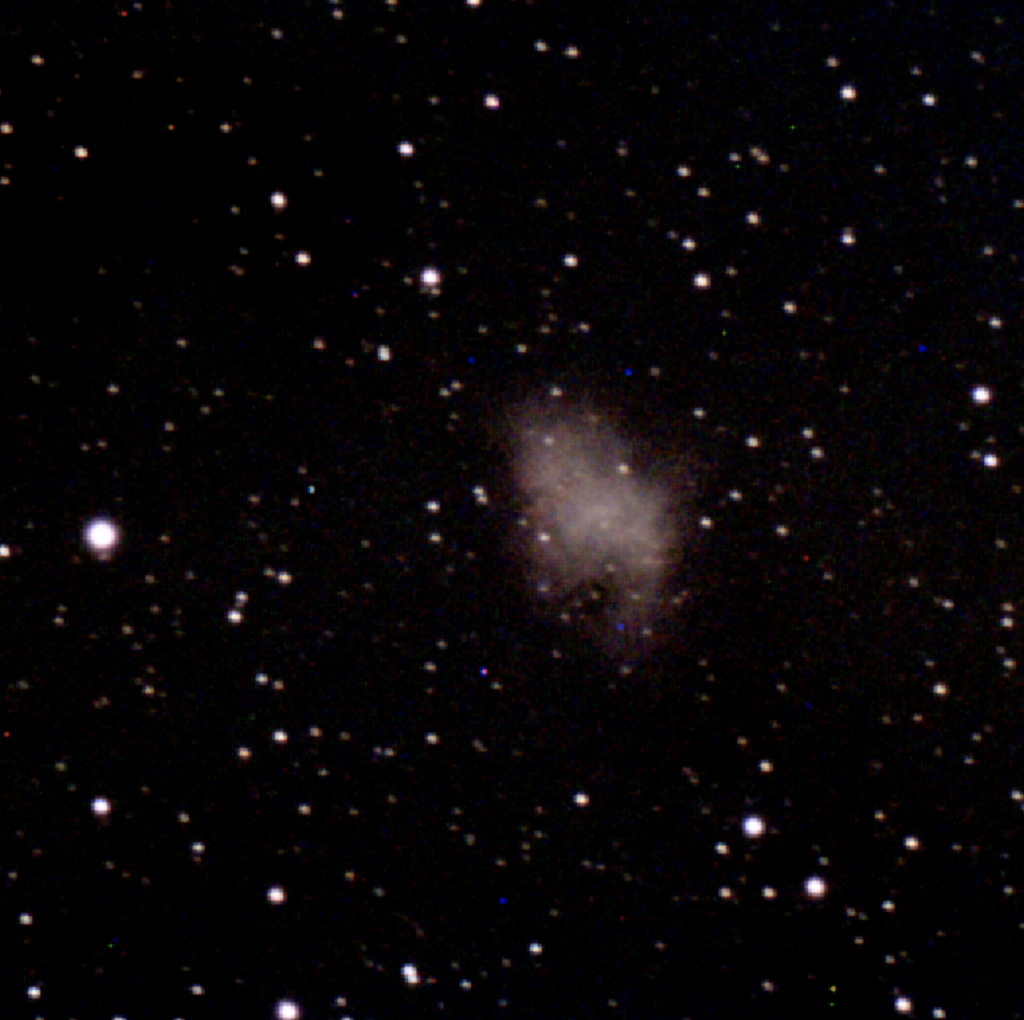M1 | NGC 1952 | The Crab Nebula | Taurus | 6,300 Light Years Away
Our Best Image

Messier 1, also known as the Crab Nebula, is a prominent supernova remnant located in the constellation Taurus. This celestial object was first observed by Chinese astronomers in 1054 AD, who documented a “guest star” that shone brightly for several weeks before fading away. The Crab Nebula’s distinctive appearance is attributed to the explosion of a massive star, which left behind a pulsar at its center. The nebula spans about 11 light-years and is characterized by its intricate filaments of gas and dust, along with the pulsar’s intense radiation that powers the nebula’s emission.
At the heart of the Crab Nebula lies the Crab Pulsar, a rapidly rotating neutron star formed from the remnants of the supernova. This pulsar, spinning at a remarkable rate of 30 times per second, emits beams of radiation that sweep across the sky, much like a lighthouse. The pulsar’s energy and magnetic fields interact with the surrounding material, creating the intricate structures seen in the Crab Nebula. The Crab Pulsar’s discovery in 1968 marked a significant breakthrough in understanding the remnants of stellar explosions and the formation of neutron stars.
The Crab Nebula is a favorite target for astronomers and astrophotographers due to its brightness and fascinating features. Its proximity to Earth, approximately 6,500 light-years away, allows for detailed observations across various wavelengths of light. Studying the Crab Nebula provides valuable insights into the processes involved in stellar death, the dynamics of supernova remnants, and the behavior of pulsars, contributing to our understanding of the life cycle of stars and the evolution of the cosmos.

